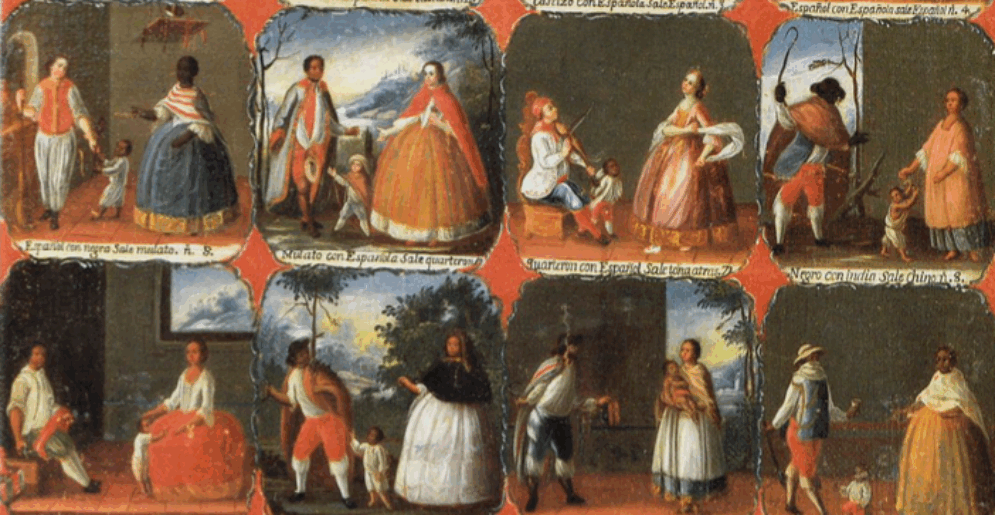
Race
Anti‑Blackness in the Latinx Community
There’s so much going on in my mind right now — disappointment, anger, and a fury I can’t shake. I feel for JaNa and what she’s experiencing. The conversations online about what Kenny Rodriguez did to JaNa Craig from Love Island season six have made it painfully clear that we don’t talk enough about anti‑Blackness within the Latino community. Afro‑Latinos live this reality every day, as do Black people who are not Latino. It is infuriating to see people from my island treat Black people under the same colonial Spanish white supremacist ideologies that continue to shape how we live, love, and value one another.
I speak on this as a Dominican-American, raised by Dominican parents. I’m thankful my parents are not racist, but growing up, I couldn’t escape the casual remarks from my aunts & community members when they learned who I was dating, who my friends were, or why I stand so firmly with Black people across the diaspora. Time and again, they would negate their own Blackness and ask me why I didn’t “get myself a white boy.” That question, and the mindset behind it, is not just harmless tradition—it is a direct reflection of a system designed to separate us from our Blackness. The truth is, the colonial caste system that the Spanish imposed still poisons our communities today.
To understand how deeply rooted this is, we have to look at the Dominican Republic itself. The Caribbean nation was the first colony in what the Spanish called the “New World.” Santo Domingo, established in 1496, was the first permanent European settlement in the Americas. It was here that Spain tested its blueprint for colonization: enslaving Indigenous Taíno peoples, kidnapped & enslaved Africans, and instituting a racial caste system that ranked everyone by proximity to whiteness. The Dominican Republic was the first experiment — the laboratory where the Spanish perfected their model of conquest, control, and racial hierarchy before exporting it across the rest of the Caribbean and Latin America. And the experiment was, in their eyes, tragically successful.
To add to the depth of anti‑Blackness in the Dominican Republic, we also have to talk about the era of Rafael Trujillo, who ruled the country as a dictator from 1930 to 1961. He opened up our country to different European immigrants and Jewish refugees from the Holocaust — not because he had a good heart, but because he wanted to “whiten up the race.” Trujillo was committing heinous crimes against Haitians and dark‑skinned Dominicans. He orchestrated the Parsley Massacre in 1937, where thousands of Haitian people were murdered simply for being Haitian or for being perceived as such. Trujillo himself would powder his skin lighter and enforce beauty standards that aligned with European ideals, sending a clear message about what was considered desirable and what was not.
This history is not just an ugly chapter of the past — it continues to live in the culture of the Dominican Republic and, by extension, across Latin America. Because the truth is, we are not the only country that behaves like this or who has inherited the racist ideologies from our colonizer. The ideology that whiteness equals progress and Blackness equals regression is something that still poisons communities throughout the region. And it is especially frustrating when I think about the fact that the Dominican Republic is a Black island. Our music, our food, our rhythms, our very way of being is shaped by African roots, and yet society has been conditioned to reject that truth.
I do want to premise this by saying there are Black Dominicans who know they are Black AND there are Black Dominicans who negate their Blackness. We are not all the same. But the legacy of colonialism has left deep scars, pushing too many of our people to distance themselves from their identity in hopes of aligning with a false sense of superiority tied to whiteness. This is why conversations about anti‑Blackness are so necessary. It’s not about excusing the behavior of my people. It’s about naming the root cause so we can understand why so many have adopted these ideologies without ever questioning them. Only when we reckon with that history can we begin to break free from it.
That legacy is not an excuse for the anti‑Blackness we still see in our communities. It is, however, a crucial piece of the story. When generations are raised under a system that told them whiteness meant civility, safety, and success — and Blackness meant poverty, disorder, and shame — it’s no wonder so many internalized these ideas without question. The tragedy is that these beliefs have been passed down so deeply that many in the Dominican Republic and across Latin America don’t even recognize them as colonial inheritance. They’re treated as normal, as tradition, as just “the way things are.” But make no mistake: they are the chains of colonialism still wrapped around our people’s minds.
Dating back to the late 1500s, Spain’s sistema de casta divided people into as many as sixteen categories: mestizo for Spanish and Indigenous, mulatto for Spanish and African, zambaigo for African and Indigenous, and countless others, each carrying different privileges. At the very top were Spaniards of pure European descent, and at the very bottom were Black and Indigenous peoples, confined to the harshest labor and denied access to opportunity. These divisions weren’t just legal; they were cultural and visual, captured in casta paintings that depicted lighter‑skinned families as refined and prosperous while darker‑skinned families were shown as poor, chaotic, and uncivilized. The message was clear: the closer you were to whiteness, the more human you were considered.
Though independence eventually came, the logic of the caste system never left. Practices like gracias al sacar, where a person of mixed race could buy a certificate of legal “whitening,” reinforced the idea that status and safety came through proximity to whiteness. Phrases like mejorar la raza, or “improve the race,” became woven into our cultural DNA. To this day, many Dominican and Latin families warn darker‑skinned relatives not to stay in the sun too long, to seek lighter partners so their children will have “good hair” and lighter skin, and to embrace features that lean toward European standards. These messages, while often spoken casually, serve as constant reinforcements of colorism, featurism, and anti‑Blackness.
When many of us bring up the racism issues Latin America faces we’re told “we don’t have a race problem, we have a class problem.” It’s important to be clear: class has never been just about money. Classism is a byproduct of colonial racism. It’s no coincidence that the poorest populations in our countries are disproportionately Black and Indigenous, while the wealthiest are white or light‑skinned descendants of Europeans. When we pretend this is “just about class,” we erase the racism that created the class divide in the first place.
So when we talk about what Kenny Rodriguez did to and said about JaNa Craig, we must remember this is someone’s personal life and how we choose to speak about this situation matters. JaNa deserves privacy and grace as she navigates through this difficult and heartbreaking situation. But as a Dominican I must say, this is not an isolated incident. If we choose to have this conversation we must talk about centuries of conditioning that taught us to aspire to whiteness while disowning our own Blackness. Though the Dominican Republic and other nations declared freedom from colonial rule long ago, the system itself was never dismantled — it simply adapted. We still echo the whispers of the Spanish caste system every time we dismiss dark skin, every time we praise European features, every time we choose to ignore the Blackness that lives in our families, our histories, and ourselves.
If we are ever going to move forward, we have to stop masking these issues with the language of class. We must confront the truth: anti‑Blackness is real, it is destructive, and it is one of the deepest wounds left by colonialism in the Dominican Republic and across Latin America. Naming it is the first step toward healing, because until we do, we will continue to carry the weight of a system that was never meant to see us fully free.
Get The Latest
Signup for the AFROPUNK newsletter



